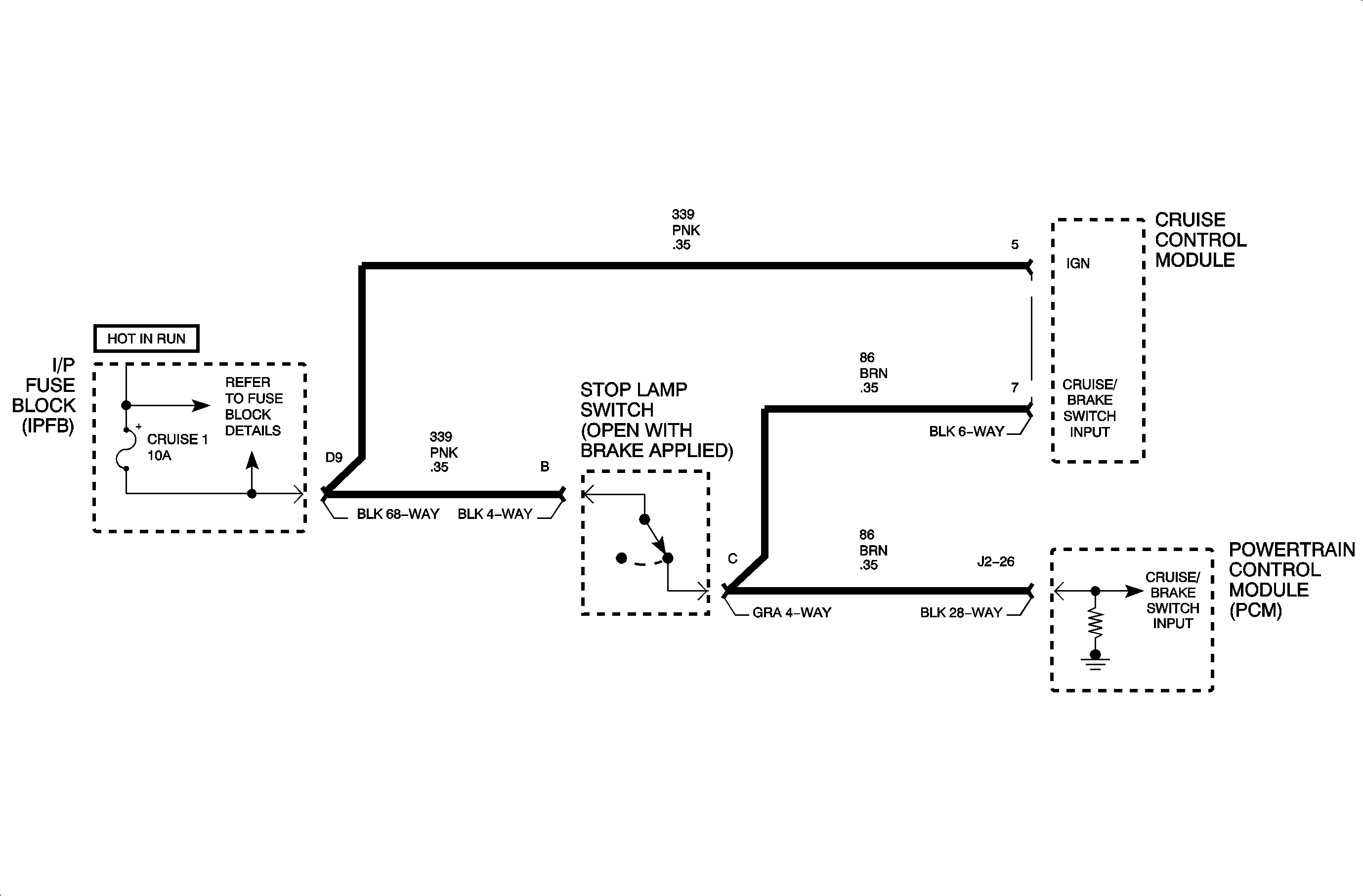
Circuit Description
The cruise release switch is a normally closed switch. The stop lamp switch signal circuit is a normally open switch. When the brake pedal is released, the powertrain control module (PCM) detects a high voltage signal on the TCC brake switch/cruise control release signal circuit and a low signal voltage signal on the stop lamp switch signal circuit.
Conditions for Running the DTC
| • | The engine is ON. |
| • | The traction control system or the antilock brake system are not active and have not failed. |
| • | The vehicle has accelerated from 0 km/h (0 mph) to 60 km/h (37 mph) 3 times in 1 ignition cycle. |
| • | This diagnostic runs continuously once the conditions for running the DTC has been achieved. |
Conditions for Setting the DTC
When the brake pedal is pressed, the PCM detects a high voltage signal on the stop lamp switch signal circuit and a high voltage signal on the TCC brake switch/cruise control release signal circuit.
Action Taken When the DTC Sets
| • | The PCM stores the DTC information into memory when the diagnostic runs and fails. |
| • | The malfunction indicator lamp (MIL) will not illuminate. |
| • | The PCM records the operating conditions at the time the diagnostic fails. The PCM stores this information in the Failure Records. |
| • | The cruise control system is disabled. |
Conditions for Clearing the DTC
| • | A last test failed, or current DTC, clears when the diagnostic runs and does not fail. |
| • | A history DTC will clear after 40 consecutive warm-up cycles, if no failures are reported by this or any other non-emission related diagnostic. |
| • | Use a scan tool in order to clear the DTC. |
Diagnostic Aids
In order to avoid a misdiagnosis, Inspect for proper adjustment of the cruise control release switch. Refer to Cruise Release Switch Adjustment .
Step | Action | Yes | No |
|---|---|---|---|
Schematic Reference: Cruise Control Schematics Connector End View Reference: Antilock Brake System Connector End Views in Antilock Brake System | |||
1 | Did you perform the Cruise Control Diagnostic System Check? | Go to Step 2 | |
2 |
Does the TCC Brake Pedal Switch parameter display Applied? | Go to Diagnostic Aids | Go to Step 3 |
3 |
Does the test lamp illuminate? | Go to Step 4 | Go to Step 5 |
4 | Test the TCC brake switch/cruise control release signal circuit for a short to voltage. Did you find and correct the condition? | Go to Step 9 | Go to Step 6 |
5 | Inspect for poor connections at the harness connector of the cruise release switch. Did you find and correct the condition? | Go to Step 9 | Go to Step 7 |
6 | Inspect for poor connections at the harness connector of the powertrain control module (PCM). Did you find and correct the condition? | Go to Step 9 | Go to Step 8 |
7 | Replace the cruise release switch. Refer to Cruise Control Release Switch Replacement . Did you complete the repair? | Go to Step 9 | -- |
8 |
Important: Program the replacement PCM. Replace the PCM. Refer to Powertrain Control Module Replacement in Engine Controls - 1.9L (LSJ). Did you complete the replacement? | Go to Step 9 | -- |
9 |
Does the DTC reset? | Go to Step 2 | System OK |
